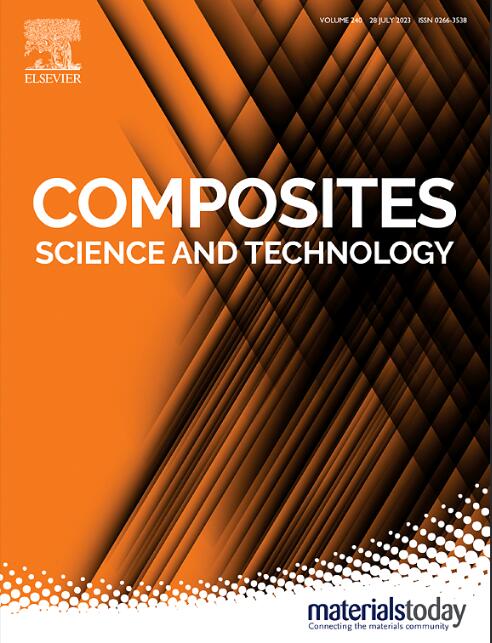Spatio-temporal prediction of curing-induced deformation for composite structures using a hybrid CNN-LSTM and finite element approach
IF 8.3
1区 材料科学
Q1 MATERIALS SCIENCE, COMPOSITES
引用次数: 0
Abstract
Coordinated control of structural accuracy and mechanical properties is the key to composites manufacturing and the prerequisite for aerospace applications. Accurate and efficient prediction of curing-induced deformation is critical to minimizing process-induced defects and ensuring dimensional stability in fiber-reinforced polymer (FRP) composites manufacturing. Whereas traditional equation-based modeling requires extensive computational resources, data-driven surrogate models leverage machine learning to rapidly achieve accurate distortion prediction. In this study, we explored a novel spatio-temporal prediction model that incorporates the finite element (FE) method with a deep learning framework to efficiently forecast the curing-induced deformation evolution of composite structures. Herein, an integrated convolutional neural network (CNN) and long short-term memory (LSTM) network approach was developed to capture both the space-distributed and time-resolved deformation. The FE method combined with the bridging model was established to simulate curing process and generate a comprehensive database containing tensors of temperature, degree of cure, initial coordinate, stress and deformation during curing. In contrast to conventional rapid prediction models that can only calculate the deformation after demolding, the primary focus in developing this strategy lies in characterizing the spatio-temporal variations of warpage. The validations of composite laminates and sandwich structures with different stacking sequences confirm the model's accuracy in predicting curing-induced deformations. The proposed framework provides a promising approach to predict curing-induced warpage evolution for optimizing the process and precisely controlling part quality.
基于CNN-LSTM和有限元的复合材料结构固化变形时空预测
结构精度和力学性能的协调控制是复合材料制造的关键,也是航空航天应用的前提。在纤维增强聚合物(FRP)复合材料制造中,准确有效地预测固化引起的变形对于最大限度地减少工艺缺陷和确保尺寸稳定性至关重要。传统的基于方程的建模需要大量的计算资源,而数据驱动的代理模型利用机器学习来快速实现准确的变形预测。在这项研究中,我们探索了一种新的时空预测模型,将有限元方法与深度学习框架相结合,以有效地预测复合材料结构的固化变形演变。本文提出了一种集成卷积神经网络(CNN)和长短期记忆(LSTM)网络的方法来捕获空间分布和时间分辨的变形。建立了结合桥接模型的有限元方法来模拟固化过程,生成了包含温度张量、固化度张量、初始坐标张量、固化过程中的应力张量和变形张量的综合数据库。与传统的快速预测模型只能计算脱模后的变形相比,开发该策略的主要重点在于表征翘曲的时空变化。对不同堆叠顺序的复合材料层合板和夹层结构进行了验证,验证了该模型预测固化变形的准确性。所提出的框架为预测固化引起的翘曲演变提供了一种有前途的方法,用于优化工艺和精确控制零件质量。
本文章由计算机程序翻译,如有差异,请以英文原文为准。
求助全文
约1分钟内获得全文
求助全文
来源期刊

Composites Science and Technology
工程技术-材料科学:复合
CiteScore
16.20
自引率
9.90%
发文量
611
审稿时长
33 days
期刊介绍:
Composites Science and Technology publishes refereed original articles on the fundamental and applied science of engineering composites. The focus of this journal is on polymeric matrix composites with reinforcements/fillers ranging from nano- to macro-scale. CSTE encourages manuscripts reporting unique, innovative contributions to the physics, chemistry, materials science and applied mechanics aspects of advanced composites.
Besides traditional fiber reinforced composites, novel composites with significant potential for engineering applications are encouraged.
 求助内容:
求助内容: 应助结果提醒方式:
应助结果提醒方式:


